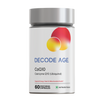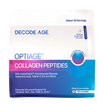In a recent study it was found that Aging has been shown to not only enhance vulnerability to acute liver injury but also increase susceptibility to the fibrotic response. Aging is associated with the severity and poor prognosis of various liver diseases including nonalcoholic fatty liver disease, alcoholic liver disease, hepatitis C, and liver transplantation.
Several findings, in both preclinical animal models and on human liver specimens, convergein supporting the presence of specific ageing hallmarks in the diseases involving these hepatic compartments. At the cellular level, a senescent phenotype has been identified in response to ageing that is characterized by a flat appearance, proliferative arrest, and production of specific molecules. Biliary and vascular components, within the liver, have emerged as important determinants of some forms of liver disease. The ageing process is represented by the time-dependent decay in physiologic functions of living beings. Several hallmark features have been observed in ageing, such as genetic alterations, mitochondrial impairment, and telomere shortening. The net effect of these cells in the course of diseases is debatable.
Ageing increases susceptibility to fibrotic response as well as increased vulnerability to acute liver injury. Various liver illnesses, such as nonalcoholic fatty liver disease, alcoholic liver disease, hepatitis C, and liver transplantation, are connected with ageing and bad prognosis.
Ageing And Liver Cells
According to research by the National Library of Medicine, the following things were found -
- Lipofuscins are highly cross-linked undegradable protein aggregates that are formed when proteins damaged and denatured by oxidative stress are not degraded inside the liver cells. The volume of the liver cells gradually increases as they approach maturity, but starts to decrease due to aging. With old age, the number and activation level of Kupffer cells is increased. The function of Kupffer cells is to remove antigen–antibody complexes or nanoparticles such as senescent cell fragments in the liver sinusoidal vascular system. Such lipofuscins cause increased generation of reactive oxygen species (ROS) in cells and reduced cell survivability. Compared with the studies on liver cells, relatively little is known about what kind of effect ageing has on liver sinusoidal endothelial cells (LSECs), Kupffer cells, and hepatic stellate cells (HSCs). Although the number of desmin-positive HSCs goes up with aging, the number of α-smooth muscle actin (SMA)-positive HSCs is observed to maintain the same level. With old age, the thickness of LSECs is enlarged by 50%, whereas the number and diameter of fenestrations (pores) are reduced.
- Studies suggested that aging negatively influences the function of the liver by causing a substantial morphological change in the sinusoidal vascular system. Also, the area of smooth endoplasmic reticulum is reduced, causing decreased generation of smooth endoplasmic reticulum and reducing the synthesis of microsomal proteins in the liver. Aging-related changes in liver cells include volume changes, polyploidy (polyploidy nuclei), accumulation of dense bodies (lipofuscin) inside liver cells, a decreased area of smooth endoplasmic reticulum, and a declining number and dysfunction of mitochondria.
Acute Liver Injury And Liver Regeneration
Acute liver injury was greater in aged rats compared with younger rats in the acute intraperitoneal ethanol or thioacetamide injection models. Aging causes alterations of several signal-transduction pathways and changes in the expression of C/EBP and chromatin-remodeling proteins. These age-related alterations may lead to an increase in liver injury and apoptosis after CCl4 treatments. In the sequenced process of liver injury and regeneration, ageing decreases regenerative ability, which significantly delays the restoration of liver function.
Furthermore, a recent study indicated that age-associated changes of
CCAAT/enhancer-binding protein (C/EBP) family of proteins causes a severe liver injury after carbon tetrachloride (CCl4) treatments. Aged mice show an increase in repressive histone modifications in livers and subsequent repression of three key regulators of liver functions: C/EBPα, farnesoid X receptor, and telomere reverse transcriptase. Consequently, aging livers accumulate a multiprotein C/EBPα–Brm–HDAC1 complex that occupies and silences elongation factor 2 (E2F)-dependent promoters, reducing the regenerative capacity of livers in older mice.
Liver regeneration might be initiated by several stimuli, including surgical resections and treatments with CCl4 or mitogens. Recent studies have provided evidence for the crucial role of epigenetic silencing in the age-dependent inhibition of liver proliferation. Furthermore, the aging-associated decline in mitochondrial function has been shown to enhance the vulnerability to injury. In contrast to the Livers of younger animals that proliferate to restore liver homeostasis after these injuries, the livers of older animals show a significant reduction in proliferation. The aging-related changes including increased oxidative stress, increased inflammatory response, accelerated cellular senescence, and progressive organ dysfunction significantly affect cellular responses to injury.
What is the main role of the liver?

1) Bile Production-
Bile, a crucial bodily fluid, plays a dual role of discarding waste not removed by the kidneys and supporting lipid absorption and digestion via the release of bile salts and acids. Liver cells, or hepatocytes, are the primary producers of bile, which is primarily composed of water, electrolytes, bile salts, bile acids, cholesterol, bile pigment, bilirubin, phospholipids, and other constituents. From the hepatocytes, bile is secreted into the bile canaliculi and flows through a system of ducts, growing from small to large, ultimately landing in the duodenum or being stored in the gallbladder for concentration and storage, a process controlled by the duct and Oddi sphincter pressures. Once bile reaches the duodenum, it enters a cycle known as enterohepatic circulation. Here, bile fulfills its function in the intestine, and components that aren't expelled are recycled via bacterial conversion into bile acids in the gut. These recycled components are then reabsorbed in the ileum and transported back to the liver for reuse.
2) Fat-Soluble Vitamin Storage and/or Metabolism
The liver is central to the processing and storage of fat-soluble vitamins, which it typically receives through intestinal absorption as chylomicrons or VLDL. The vitamin A, for instance, is stored in liver cells known as Ito cells and can be metabolized into different forms such as retinal and retinoic acid for phototransduction or turned into glucuronide for bile secretion.The liver is central to the processing and storage of fat-soluble vitamins, which it typically receives through intestinal absorption as chylomicrons or VLDL. The vitamin A, for instance, is stored in liver cells known as Ito cells and can be metabolized into different forms such as retinal and retinoic acid for phototransduction or turned into glucuronide for bile secretion.
On the other hand, vitamin D3, whether sourced from the skin, animal or plant products, needs to undergo a two-step hydroxylation process to become functional. Initially, the liver's CYP-450 system performs 25-hydroxylation on the vitamin, which then undergoes further hydroxylation in the kidneys. The same CYP-450 system can also deactivate vitamin D by hydroxylating carbon 24.
Vitamin E is received by the liver in two forms: alpha and gamma-tocopherol. The liver integrates alpha-tocopherol with VLDL or HDL and re-releases it into circulation, while gamma-tocopherol is metabolized for excretion.
3) Drug Metabolism
The liver plays a vital role in metabolizing and detoxifying foreign substances, otherwise known as xenobiotics. It accomplishes this through a process called biotransformation, which changes these substances from fat-soluble (lipophilic) to water-soluble (hydrophilic) forms. The main arena for this process is the smooth endoplic reticulum found within liver cells or hepatocytes.
Two main steps, known as phase I and phase II reactions, make this transformation possible. In phase I, enzymes primarily from the cytochrome P450 (CYP450) family work to modify the xenobiotics into more water-friendly substances through oxidation, reduction, and hydrolysis. The product is now set up for phase II reactions.
During phase II, the metabolites from phase I are made even more water-soluble, enabling them to be secreted into the blood or bile. This step involves conjugation to either glucuronate, glutathione, or sulfate. For instance, the smooth endoplasmic reticulum carries out glucuronate conjugation, as seen with bilirubin, whereas sulfate conjugation commonly occurs in the cytosol due to the presence of necessary enzymes. Most glutathione conjugation, vital for preventing the buildup of toxic metabolites, takes place in the cytosol, although some occur in the mitochondria.
The metabolites are then transported from the liver, a process some label as phase III. Other organs, such as the kidneys and gut, can also participate in drug metabolism. However, factors such as age, gender, drug interactions, health conditions (like diabetes, pregnancy, or liver/kidney diseases), inflammation, and genetics can influence the rate and efficacy of drug metabolism.
4) Bilirubin Metabolism
The liver is crucial in the heme degradation process. Heme undergoes hemolysis, predominantly in the liver, spleen, and bone marrow, to form biliverdin, further reduced to unconjugated bilirubin. This bilirubin, attached to albumin, travels to the liver from the bloodstream. Here, it becomes water-soluble through the conjugation process facilitated by the uridine diphosphate glucuronyltransferase (UGT) system. This transformed, or conjugated, bilirubin gets secreted into the bile via bile canaliculi or marginally dissolves in the blood for renal excretion. The majority of conjugated bilirubin leaves the body through feces, as the intestinal wall cannot absorb it. Some of it, altered by gut bacteria into urobilinogen or unconjugated bilirubin, is reabsorbed for enterohepatic circulation.
5) Other Functions
The liver is essential for thyroid hormone activity, transforming T4 into T3 through a process called deiodination. It's also the primary site for producing almost all the body's plasma proteins, such as albumin, binding globulins, protein C and S, as well as every clotting element for both intrinsic and extrinsic pathways.
Tips for Maintaining Liver Health!
- Superfoods, when consumed as part of a well-balanced diet and lifestyle, can help you maintain a healthy weight, improve digestion, and lower cholesterol, all of which are beneficial to your liver. Almonds, Oats, Blueberries, Salmon, Soybeans, Yoghurt, Broccoli, Kidney beans, Spinach, Pumpkin, and Vegetable Juice are among these superfoods.
- Being physically active is beneficial in a variety of ways. It can deliver a variety of enjoyable events, as well as energizing the body, improve health and wellbeing, and promoting a healthy lifestyle. Adults should get 150-300 minutes of moderate-intensity physical exercise per week, according to guidelines, to help prevent non-alcoholic fatty liver. Walking, cycling, jogging, football, yoga, dancing, gardening, and a variety of other activities are examples of these activities.
- Try to avoid smoking.
- Get vaccinated for Hepatitis A and B
- Avoid taking unnecessary medications
Found this blog interesting and insightful? Check out the other blogs we have written in the RESEARCH section on our website. You will be able to grasp a lot of knowledge related to your body and the functioning of different organs.
To stay connected with us and to get regular updates to subscribe to our newsletter in your inbox.
So what are you waiting for? Take a step towards health by following Decode Age.




















Leave a comment
All comments are moderated before being published.
This site is protected by hCaptcha and the hCaptcha Privacy Policy and Terms of Service apply.